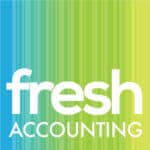Table of Contents

Cash Flow and Managing Accounts Receivable
Planning

Accounts Receivable Management

Ad-hoc Accounts Receivable Management

 Stephan Hablutzel is Chief Operating Officer at Fresh Accounting Ltd. Prior to starting with Fresh Accounting Stephan has for over 25 years resided and worked in Hong Kong and Singapore in regional roles as CFO and COO from startups in LegalTech to multinational groups in the fashion and lifestyle industry. He held numerous directorships and sat on various Board of Management. Besides finance related expertise, he brings in-depth experience in legal and international tax matters, corporate governance, restructuring and project management. Stephan holds a degree in Economics from the University of St. Gallen in Switzerland and holds the rank of a captain in the Swiss army.
Stephan Hablutzel is Chief Operating Officer at Fresh Accounting Ltd. Prior to starting with Fresh Accounting Stephan has for over 25 years resided and worked in Hong Kong and Singapore in regional roles as CFO and COO from startups in LegalTech to multinational groups in the fashion and lifestyle industry. He held numerous directorships and sat on various Board of Management. Besides finance related expertise, he brings in-depth experience in legal and international tax matters, corporate governance, restructuring and project management. Stephan holds a degree in Economics from the University of St. Gallen in Switzerland and holds the rank of a captain in the Swiss army.
This article does not constitute legal advice.
The opinions expressed in the column above represent the author’s own.
READ MORE FROM STEPHAN HABLUTZEL: CFO Redefined in a Gig Economy





